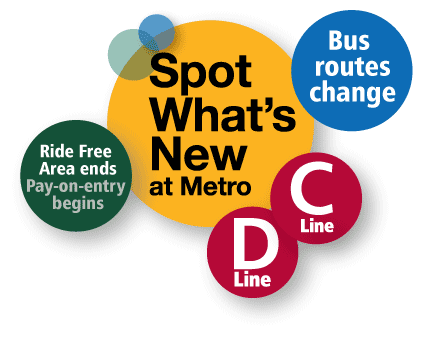September 7, 2012
Landmark changes will lead to better service for more riders

Later this month, Metro will be making one of our biggest-ever revisions to bus service. The changes that start Sept. 29 mean we'll be asking our customers to alter their travel habits and we'll be revamping our own operations. It could be a challenging couple of weeks as we all make adjustments.
I'm confident that in the end, the changes will be worthwhile, resulting in a more efficient transit system that gets many more people where they want to go.
Here's what's happening:
- The RapidRide C and D lines will start service, forming a 17-mile bus rapid transit spine providing fast, frequent and reliable service all day, every day between West Seattle, downtown Seattle, Uptown and Ballard.
- The Ride Free Area in downtown Seattle will end and we'll shift to "pay on entry" on all Metro buses. We expect this will result in more revenue to preserve service and will make fare payment easier for customers to understand.
- About 50 bus routes will change. We're restructuring routes to reduce duplication, make service more direct, and give riders better connections to RapidRide and popular destinations. We're discontinuing some of our least productive routes and reinvesting the service hours in more heavily used corridors to reduce overcrowding and improve reliability. We're also making many smaller adjustments to bus routings and schedules to improve the speed and reliability of our service.
In making these changes we're following a path charted for us by Executive Constantine and the King County Council. They've given us a new strategic direction that emphasizes reducing inefficiencies and providing service where it's needed most, making the best use of the public's tax and fare dollars.
Critical Path
This approach is critically important to Metro's long-term sustainability. Demand for transit has been rising and will continue to increase as employment and population grow. At the same time, we're still facing a substantial funding shortfall after the expiration in 2014 of the congestion reduction charge — supplemental funding that is enabling us to keep our system whole for now. Although some riders will, unfortunately, be inconvenienced by upcoming changes, we need to make the best use of our current funds to serve more riders overall. And the County will continue pursuing a funding structure that enables Metro to help meet the region's goals for public transportation growth.
Recent experience shows that we're on the right path. We have achieved impressive results from both service revisions on the Eastside and from the first two RapidRide lines. Overall, Metro's weekday ridership increased about 2.6 percent from spring 2011 to spring 2012. But on the Eastside, where we made revisions last year to better serve key regional destinations, improve service quality, and meet demand for increased ridership on the 520 bridge, Metro's ridership increased 13 percent. And on the RapidRide A and B lines, weekday ridership grew an estimated 16 percent above the routes the lines replaced. The A Line has reached its five-year ridership growth target — 50 percent — in only two years.
So the long-term outlook for the September service revisions is promising even if the first couple of weeks may sometimes be bumpy. Of course, we've been working hard to make the changes go as smoothly as possible. We're running a multi-pronged customer information campaign about the upcoming changes and the advantages of using ORCA cards when we switch to pay-on-entry. Around the 29th, Metro employees will be out in full force in downtown Seattle and key neighborhood locations to assist riders.
We're also collaborating with the City of Seattle to start a circulator shuttle to serve those who have relied heavily on the Ride Free Area to reach health and human services in the city center.
Visit Metro Online to learn more about the many system improvements coming Sept. 29 — and please be patient as we all adjust to them. I look forward to keeping you informed about the results of this landmark service change.
Sincerely,
Kevin Desmond, General Manager
King County Metro Transit
Rob Gannon
General Manager, King County Metro Transit

If you live in King county, Metro is your public transportation system. I want you to know about our performance and the innovative service improvements we’re bringing your way.
Visit here often to read my newsletter, or sign up to receive it by e-mail.

